Shuttle-Mir Directors and Team Members (A - B)
Go
to
Team
Members
Group (C-D)
Go
to
Team
Members
Group (E - G)
Go
to
Team
Members
Group (H - K)
Go
to
Team
Members
Group (L - N)
 George
W. S. Abbey Profile
George
W. S. Abbey Profile
George Abbey, Director of the NASA Johnson Space Center (JSC) in Houston, Texas, from 1996 - 2001, served as an integral part of the NASA Shuttle-Mir Program, providing crucial oversight, management, and guidance the first phase of the International Space Station.
Abbey joined NASA in 1967. His experiences include: Technical Assistant to the manager during the Apollo Program; Technical Assistant to the JSC Director during both the Skylab space station project in 1973 and the Apollo-Soyuz U.S.-Soviet space cooperative venture in 1975; Director of Flight Operations 1976 to 1985; and Director of Flight Crew Operations until 1988, when he became Deputy Associate Administrator for the Office of Space Flight. He became Acting Director of JSC in 1995.
He has also served on important planning and policy boards, including the Synthesis Group, and was Senior Director for Civil Space Policy for the National Space Council, Executive Office of the President.
Prior to his NASA career, Abbey was a pilot and an officer in the United States Air Force. He earned a Bachelor of Science degree from the United States Naval Academy and a Master of Science degree in electrical engineering from the Air Force Institute of Technology.
In his Oral History, colleague Mark Albrecht commented on George Abbey's role in the Shuttle-Mir Program: "George was an absolutely pivotal and crucial influence on this entire process. The Space Council, I would say, prior to George joining us, was in a period of frustration and inability to communicate clearly either way with NASA. I think we had a growing appreciation of where there was not proper functionality in the communication between the White House and NASA, but we didn't know how to fix it. We tried as best we might in various ways.
"I think it was with George's joining the Space Council that we really were able to communicate effectively and to understand how to properly motivate and to understand from NASA's perspective their requirements and practicalities that really allowed this [Phase 1] to move forward," said Albrecht.
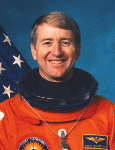 Frank
L. Culbertson, Jr. Profile
Frank
L. Culbertson, Jr. Profile
As Director of Phase 1 for NASA, Astronaut Frank Culbertson was responsible for the overall management of the Shuttle-Mir Program, as well as executing many crucial decisions, such as continuing the U.S. residency on Mir after a fire onboard.
Culbertson often represented Phase 1 to Congress and to the public, and led many negotiations with the Russians. Culbertson also served as Technical Director for the program's Management Working Group, with his Russian counterpart, Valery Ryumin.
As Phase 1 Manager, Frank Culbertson functioned under a tremendous workload, but he recognized his teammates were similarly burdened. In his Oral History, NASA psychiatrist Chris Flynn - who worked in Russia as a flight surgeon during Shuttle-Mir - talks about Culbertson's awareness of human stress factors.
Flynn says, "One of the things that I appreciated Frank Culbertson for ... is he appreciates that it's not just wiring. It's not just fuses that have limits. It's not just metal [with] a limit of how much it can be stressed. But ... human beings have limits [too]. And that ... gets lost [in highly technical programs] ... without people like Frank Culbertson."
Prior to his Shuttle-Mir management position, Culbertson piloted space shuttle mission STS-38 and commanded STS-51, logging over 344 hours in space. He became an astronaut in 1985, after earning a bachelor of science degree in aerospace engineering from the U.S. Naval Academy and serving as an aviator in the United States Navy.
Culbertson served as the International Space Station's Manager for Operations. He directed the Phase 1 Program from August 1995 until September 1998. In 1999 he was assigned as commander of the Expedition 3 crew for the International Space Station.
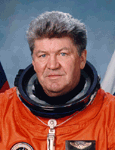 Valery
V. Ryumin Profile
Valery
V. Ryumin Profile
Valery Ryumin was the ninth and final Russian cosmonaut to fly to Mir on an American Space Shuttle. He flew on STS-91, which brought home American astronaut Andrew Thomas and ended Phase 1 of the International Space Station Program.
Ryumin is a veteran of three other spaceflights: a Soyuz mission and two stays on the Salyut-6 space station. He was also the Russian technical director for the Phase 1 Shuttle-Mir Program, and he served as RSC Energia's technical director for the Phase 1 Management Working Group. In this capacity, Ryumin and his American counterpart, Frank L. Culbertson, Jr., led the technical direction of the Shuttle-Mir Program's activities as well as coordinated the activities of the working groups that supported Phase 1.
Ryumin served in the Army before attending and graduating from Kaliningrad Mechanical Engineering Technical College and from the Moscow Forestry Engineering Institute with a specialty in spacecraft control systems. He then joined RSC Energia in 1966 and became a member of the cosmonaut corps in 1973.
In his Oral History, Ryumin said: "I believe that Phase 1 program is very useful and will be very useful for the future International Space Station. During these joint operations during Phase 1 program, we learned a lot. We learned how to understand each other. We got acquainted with the philosophies of each country, and we met a lot of people. I believe it's a very important step for our next second step, which will be ISS."
Mark J. Albrecht Profile
Mark Albrecht was the Executive Secretary for the National Space Council (NSC) under President George Bush from 1989 to 1992. In that role, Albrecht helped to formulate a national space policy for the Bush Administration, including the President's announcement on July 20, 1989, that the U.S. would establish a manned lunar base and send humans to Mars.
Phase 1 eventually evolved out of the need to gather long-duration medical data needed to accomplish the ambitious goals of that presidential announcement and to further the knowledge necessary to operate what would become known as the International Space Station.
Prior to his NSC appointment, Albrecht was engaged as a legislative assistant for National Security Affairs to Senator Pete Wilson of California. He has also coordinated the space business activities for the Science Applications International Corporation. Additionally, Albrecht has worked for Lockheed-Martin in its Space & Strategic Missions Sector. He holds bachelor and masters degrees in history from the University of California, Los Angeles, and a doctorate in public policy analysis from the Rand Graduate School.
In his Oral History, Albrecht discussed the political environment surrounding the proposed space policy that would ultimately lead to the Shuttle-Mir program:
"Of course, in 1989 we were not engaged in any fever-pitch technology space race with the then Soviet Union. There was no national crisis and urgency, and we knew, in fact, the price tag for this kind of Exploration Initiative would be in the hundreds of billions of dollars, and that there would be potentially very little stomach on the part of the Congress to approve a hundreds of billions of dollars program.
"So we tried to use the lessons of Apollo and to make it clear that what the President was talking about with his Initiative on Human Exploration was in the tradition of Apollo . . . that is to say not a crash 10-year program of the highest national priority. In fact, what we wanted were the benefits of the Apollo program, which was the long-term focus of human exploration; the reaffirmation of the American spirit and the American ethic; the long-term benefits of the technology development; and the demonstration of international leadership, when the strains of the Cold War as the guiding principle of American foreign policy for 40 years was clearly coming into descent. So all those were the positive elements," he said.
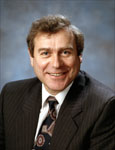 Aleksandr
P. Aleksandrov Profile
Aleksandr
P. Aleksandrov Profile
Aleksandr Aleksandrov of the RSC Energia served as the co-chair for the Crew Training and Exchange Working Group, Phase 1 Program. This group developed the requirements for crew functions, programs, schedules, and crew training.
Aleksandrov also served as the co-chair for the Extravehicular Activity (EVA) Working Group. This group was responsible for defining both the EVA requirements and the hardware necessary to support spacewalks conducted during Phase 1.
Prior to his career with Energia, Aleksandrov served in the Russian Army and attended Bauman Technical Institute, majoring in electrical engineering with an emphasis on spacecraft controls. He is a cosmonaut who has flown to the Mir and to the Salyut-7 space stations. He has worked for the Russian space program since 1964.
In his Oral History, Aleksandrov remarked on the shared EVA training that occurred during the Shuttle-Mir Program.
"We've learned a few lessons during our joint flight on Mir and during this training for the International Space Station. We took into consideration the way the training is organized at NASA, and we act accordingly. As you know, the American astronauts conducted the EVA on Mir, and they went through the training for those EVAs at our facility in Russia, and they've done it beautifully. Of course, we would even have achieved more results if we hadn't those language barriers, and those constraints imposed on us certain difficulties."
Yuri Antoshechkin Profile
Yuri Antoshechkin from RSC Energia served as a co-chair for the Flight Operations and Systems Integration Working Group. This group developed flight programs and crew work schedules for Phase 1. The group also devised the requirements for control, communications, and systems integration. Additionally, Antoshechkin served as the deputy for Mir integration.
Boris Artemov Profile
Boris Artemov was the RSC Energia Group Leader in the Configuration Management Control Sub Working Group, which established standards and controls for documents and communications.
Working Groups consisted of experts from RSC Energia, NASA, RSA, Institute for Biomedical Problems (IBMP), Gagarin Cosmonaut Training Center (GCTC), and other organizations and companies. A list of the Working Groups, their areas of responsibility, and the names of their co-chairs can be found at the Working Groups Structure.
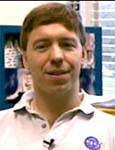 Michael
R. Barratt Profile
Michael
R. Barratt Profile
During Phase 1, NASA flight surgeon Mike Barratt was the lead for the Medical Operations Integrated Product Team and responsible for consolidating all the medical operations planned for the International Space Station. Barratt served as the flight surgeon for Norman Thagard's Mir mission, and spent much of 1994 and 1995 in Star City, Russia.
Earlier in his medical career, Dr. Barratt trained in internal medicine to learn pathophysiology in preparation for aerospace medicine, and then entered an aerospace medicine training program at Wright-Patterson Aeromedical Laboratory, run jointly by Wright State University, NASA, and the Air Force. Barratt came to the Johnson Space Center (JSC) in 1991 and worked on the Space Station Freedom Project.
Before the Shuttle-Mir Program was solidified, he traveled to Russia to look at the possibility of using the Russian Soyuz capsule as a crew return vehicle for a space station. In 1993, he was among a small group of the first Americans invited to a Soyuz landing.
During the months of working closely with his Russian medical counter-parts, Barratt was able to share information and techniques with his new colleagues. In his Oral History, Barratt discusses his interaction with the Russian doctors.
"There was a tremendous amount of exchange. I think it's no secret that they weren't able to record a lot of things that happened in their programs during the Cold War years. I think the very idea that there was a whole new set of people out there doing the same thing they were - in my case, space medicine practitioners - I think that was exciting to them. I think they [the Russian doctors] were anxious to share ideas and experiences especially.
"And in the Russian program, very little was written down compared to our program. The turnover is low so the same people have done the same jobs for maybe 20 years. The corporate experience is just tremendous, but you have to find these people to get it.
"Probably the most rewarding aspect of it was to meet these people, to talk to the flight surgeons who had been, for instance, supporting Salyut missions or had been supporting Mir missions for the decade of that station's use. They were much more free to talk during this time. Of course, this time allowed us to come together, and we learned things that we never knew had happened or never suspected," said Barratt.
Read
Mike Barratt's Oral History
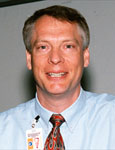 Roger
D. Billica Profile
Roger
D. Billica Profile
Roger Billica from NASA served as co-chair for the Phase 1 Medical Operations Working Group. This group was responsible for defining health care systems requirements in support of astronauts and cosmonauts involved in cooperative missions.
He was also the chief of the Medical Operations Branch at the NASA Johnson Space Center during Phase 1. Billica commented on the benefits of the Shuttle-Mir Program during his Oral History.
"Of course, the big benefit of all of this is we are in such a better position now for the International Space Station. If we had not done Phase 1 and just went from Shuttle to an International Space Station, without this experience, I'm not sure how well we would have done.
"I think we would have really fumbled around quite a bit trying to learn these same lessons, where here we had a much more structured learning experience where we were put into a situation where we basically had to fit into an existing program, learn from them, bring back from what the Russians do the best, and the experience and the knowledge that we could gain from that, at the same time learn what we wanted to do differently, and do it in a way that was less risky than just going out there and trying to learn it without that framework. So, a very worthwhile experience ...."
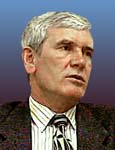 Victor
D. Blagov Profile
Victor
D. Blagov Profile
Victor Blagov from RSC Energia served as co-chair for the Flight Operations and Systems Integration Working Group. This group developed Phase 1's flight programs and crew work schedules. The group also devised the requirements for control, communications, and systems integration. Additionally, Blagov served as the deputy lead Mir flight director.
He graduated from the Moscow Aviation Institute in 1959 after majoring in aircraft engines. In the early years of his career, he designed rescue vehicles and participated in the Vostok and Voskhod programs.
Blagov commented on the value of the Phase 1 Program and the International Space Station during his Oral History interview:
"Just on a purely philosophical wave, I think that mankind needs something that would lead to the unification of people. I think that it is extremely important to do something that will benefit everybody, and not fight with each other in wars. Wars are too expensive; we can't afford wars anymore. I think it's much smarter to spend money doing something like the International Space Station or something similar. Then politicians will not have an opportunity to make wrong decisions."
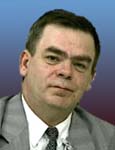 Valeri
V. Bogomolov Profile
Valeri
V. Bogomolov Profile
Valeri Bogomolov from the IBMP (Institute of Biomedical Problems) served as co-chair for the Phase 1 Medical Operations Working Group. This group was responsible for defining health care systems requirements in support of astronauts and cosmonauts involved in cooperative missions.
In his Oral History, he said: "One of our major tasks at this time is to combine both systems developed in Russia and in the United States. There are some differences, but our task is just to bring these two systems together and combine them in one joint system that will be used on the International Space Station by all partners. So, of course, the major task is to accomplish our goal, which is to provide adequate medical support for our cosmonauts or astronauts on board."
Bogomolov, a medical doctor, graduated from the Moscow Medical Institute in 1967.
Aleksandr G. Botvinko Profile
Aleksandr Botvinko from the Russian Space Agency (RSA) was the deputy technical director for the Phase 1 Management Working Group. Within this group, Botvinko helped to establish configuration management control standards, as well as the standards for Phase 1 documents and communications.
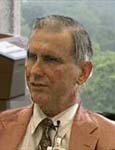 Travis
R. Brice Profile
Travis
R. Brice Profile
Travis Brice fulfilled multiple key roles for NASA during Phase 1. He was affiliated with the Russian language contract that covered all the interpretation, translation, and language training for the joint Russian-American programs. He was also associated with the contract between NASA and the Gagarin Cosmonaut Training Center (in Star City, Russia), that set up housing, language training, and other support for NASA's Directors of Operations in Russia.
Additionally, he was in charge of supporting the cosmonauts who trained at NASA, as well as the astronauts who travelled to Russia. In his Oral History, Brice elaborated on the many unknowns experienced by the first Americans arriving in Russia in the early days of the exchange program:
"We were set up into a situation where we had no idea what we were going to be putting our people into when we went to Russia. Norm [Thagard] and Bonnie [Dunbar] didn't have a clue. We tried to find out from the Russians what we could expect when our people got over there, and we were told it would be taken care of, so we had to trust them. This was kind of one of the early steps, where we had to step out and just trust the Russians to do what's right.
"And in most cases everything came out very well. I think the Russians, in all honesty, the Gagarin Center folks, did the very best they could and they did every effort they could to make our people just as comfortable as their people are, and in some cases I think they even went beyond what they would normally try to do for their own people," Brice said.
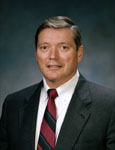 Randy
Brinkley Profile
Randy
Brinkley Profile
Randy Brinkley managed NASA's Space Station Program Office during Phase 1 of the International Space Station Program. This office at the NASA Johnson Space Center in Houston, Texas, is responsible for the design, construction, and operation of the International Space Station.
The International Space Station Program brings together the work of NASA and its partners -- the European Space Agency, Canadian Space Agency, the National Space Development Agency of Japan, and the Russian Space Agency, as well as private companies in all of those countries. Together, they design, build and prepare to utilize a permanent research outpost in low-Earth orbit.
Brinkley joined NASA in 1992, when he signed on as a special assistant for the Office of Space Flight. Later that year, he was assigned as the Mission Director for the first service and repair flight of the Hubble Space Telescope in December 1993. He resigned as manager of NASA's Space Station Program Office in April 1999.
Prior to his NASA career, Brinkley spent 25 years as an officer and pilot for the United States Marine Corps. He attended the University of North Carolina and has masters degrees in business administration, international relations, and national security and strategic studies. He is a graduate of the Navy Fighter Weapons School (Topgun).
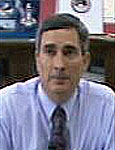 William
C. "Charlie" Brown Profile
William
C. "Charlie" Brown Profile
Charlie Brown from the NASA Johnson Space Center served as the co-chair for the Crew Training and Exchange Working Group. This group developed the requirements for crew functions, programs, schedules, and crew training.
During Phase 1, important information was obtained, said Brown, during his Oral History interview:
"We've learned a lot about their [Russian] training program. We've learned a lot about what is required to maintain a space station on orbit, the things that can happen and how to react to those things, how we need to do business a little differently to be able to react to them.
"For instance, before Phase 1, we probably wouldn't have considered adding things to the Shuttle manifest within, say, three or four months before flying. During Phase 1, there are a lot of things that happened that we had to add things very late, and [we] were able to do that. So we learned a lot."
Brown holds bachelor's and master's degrees in aerospace engineering. He was a pilot and flight instructor in the Navy before joining NASA.
Go
to Team Members group (C - D)
Go
to Team Members group (E - G)
Go
to Team Members group (H - K)
Go
to Team Members group (L - N)